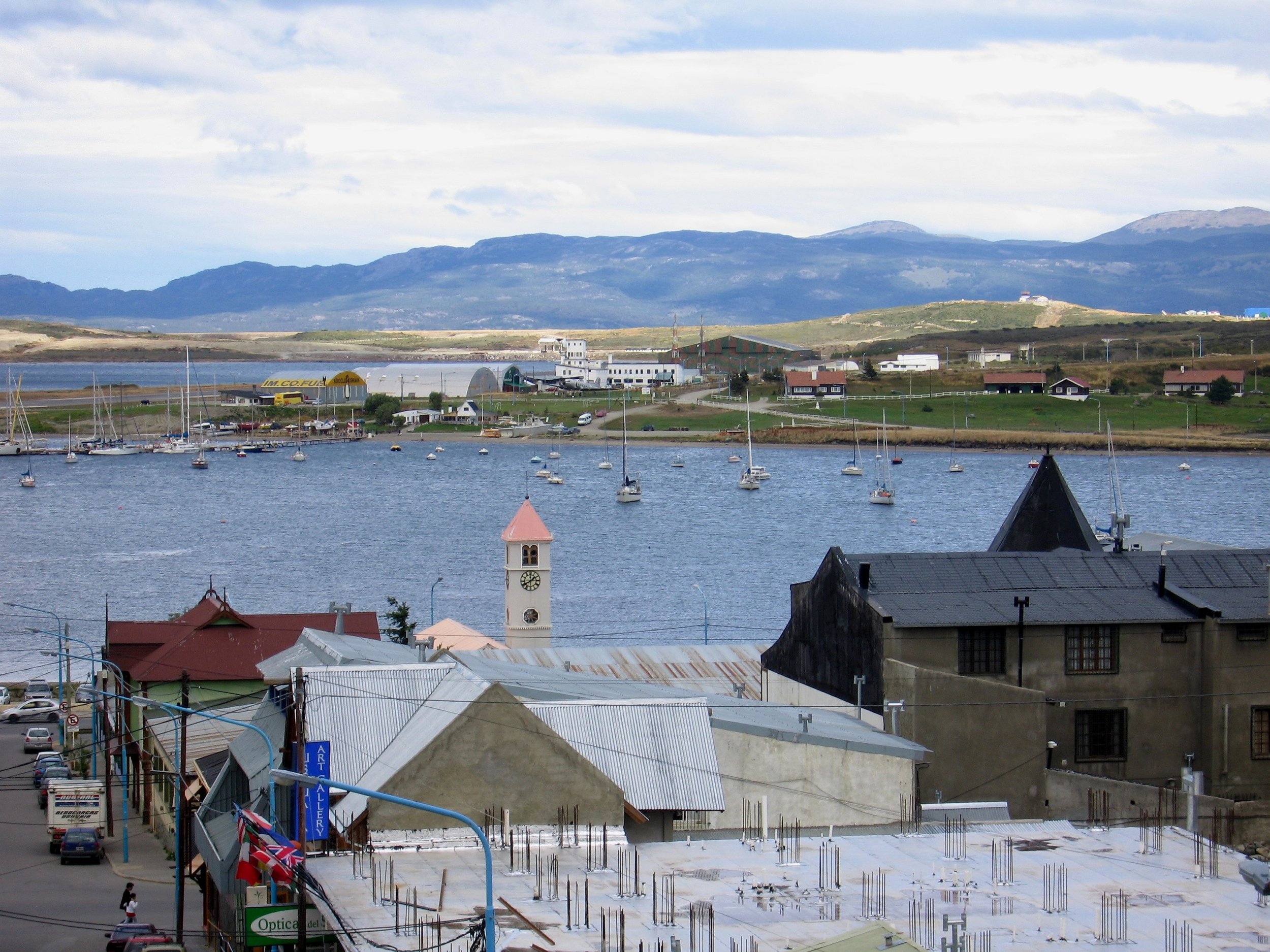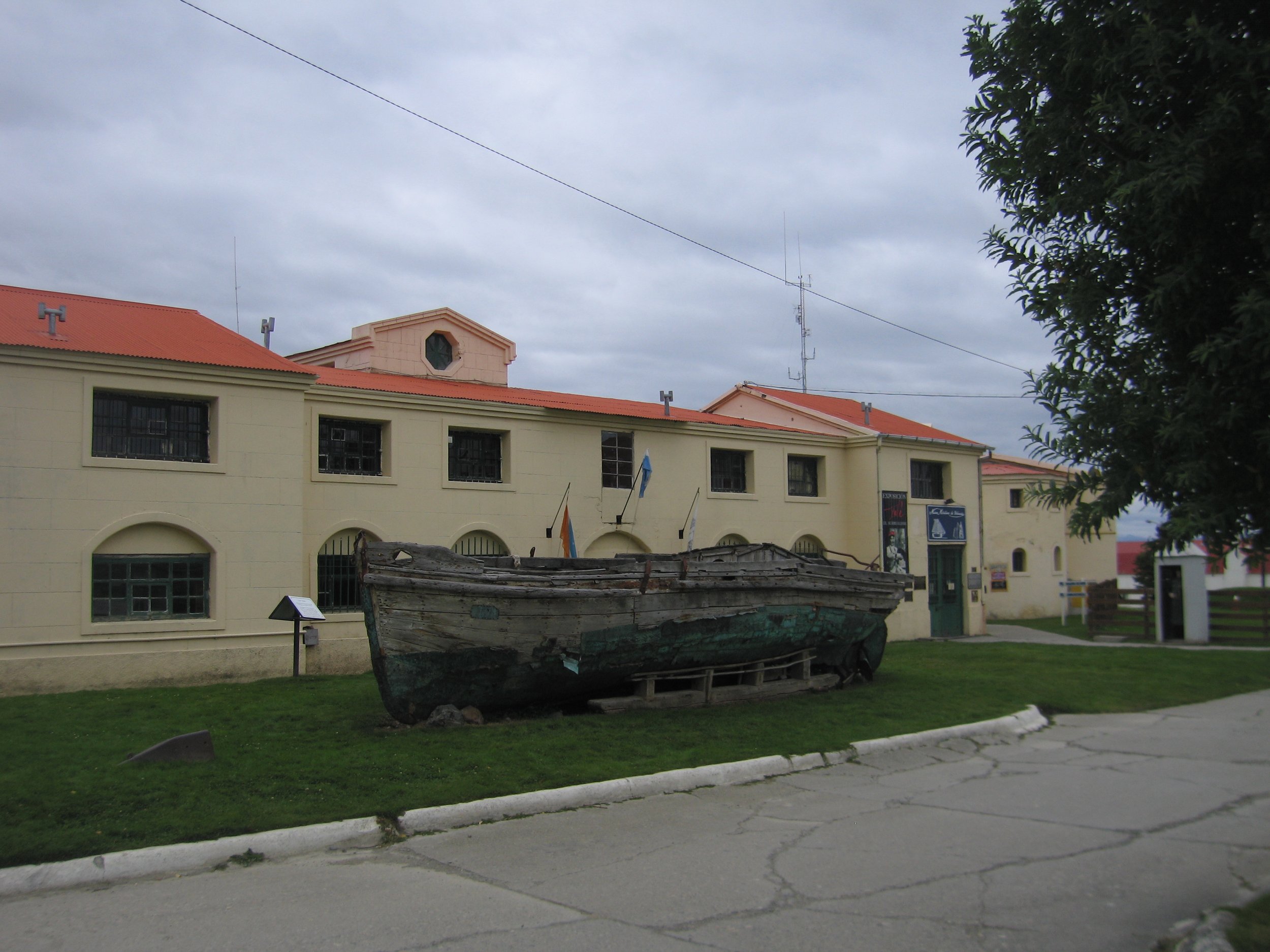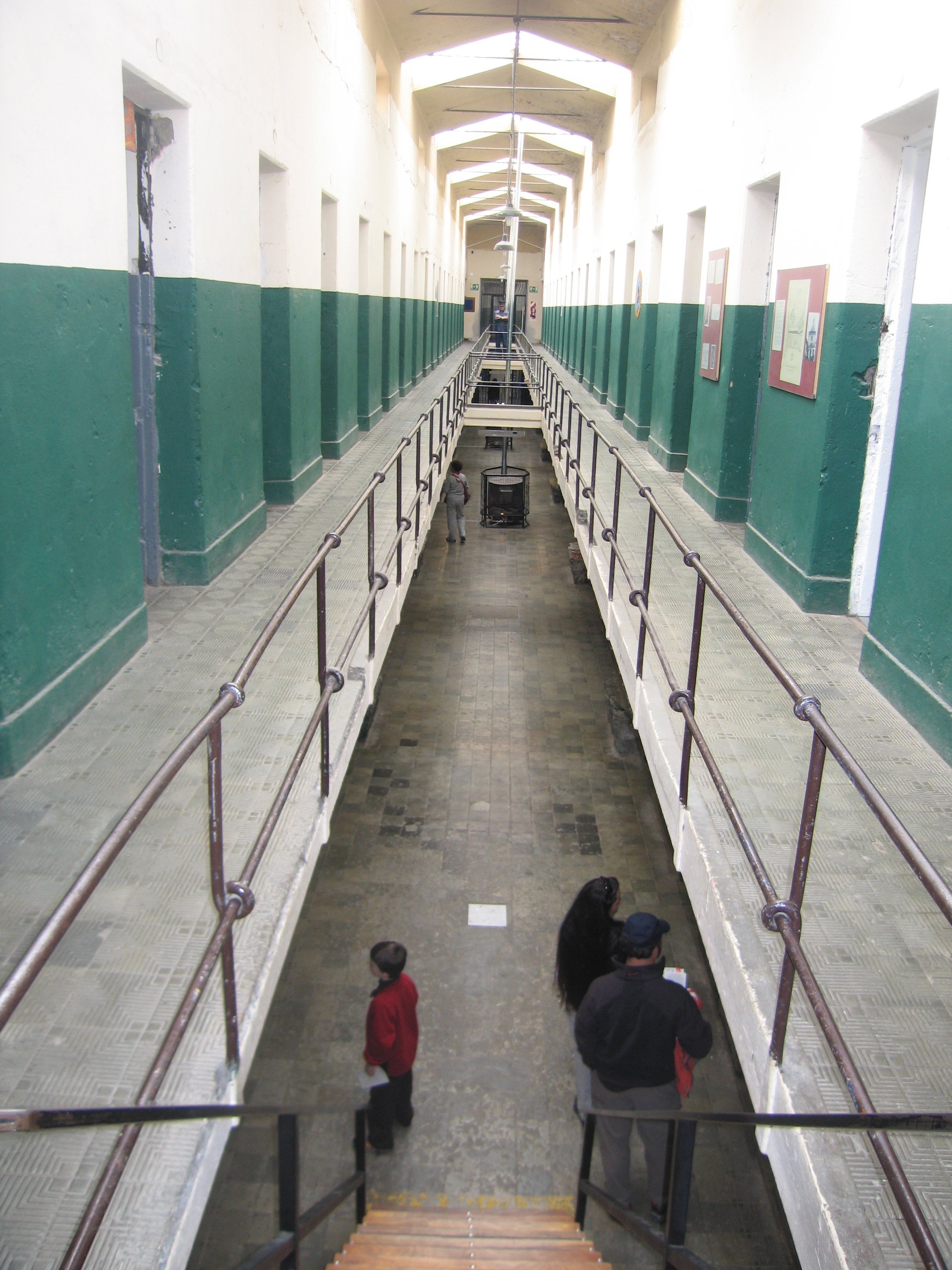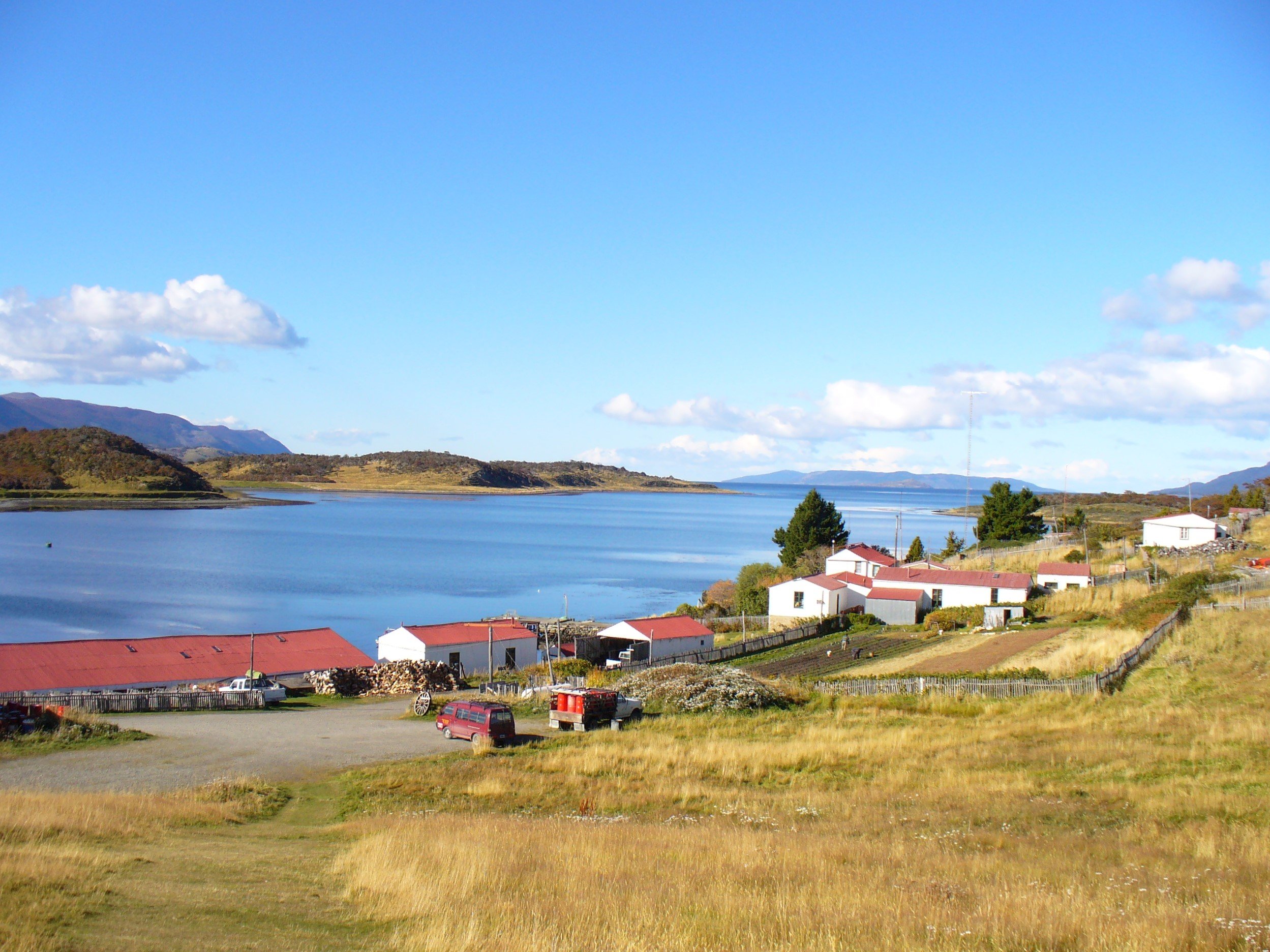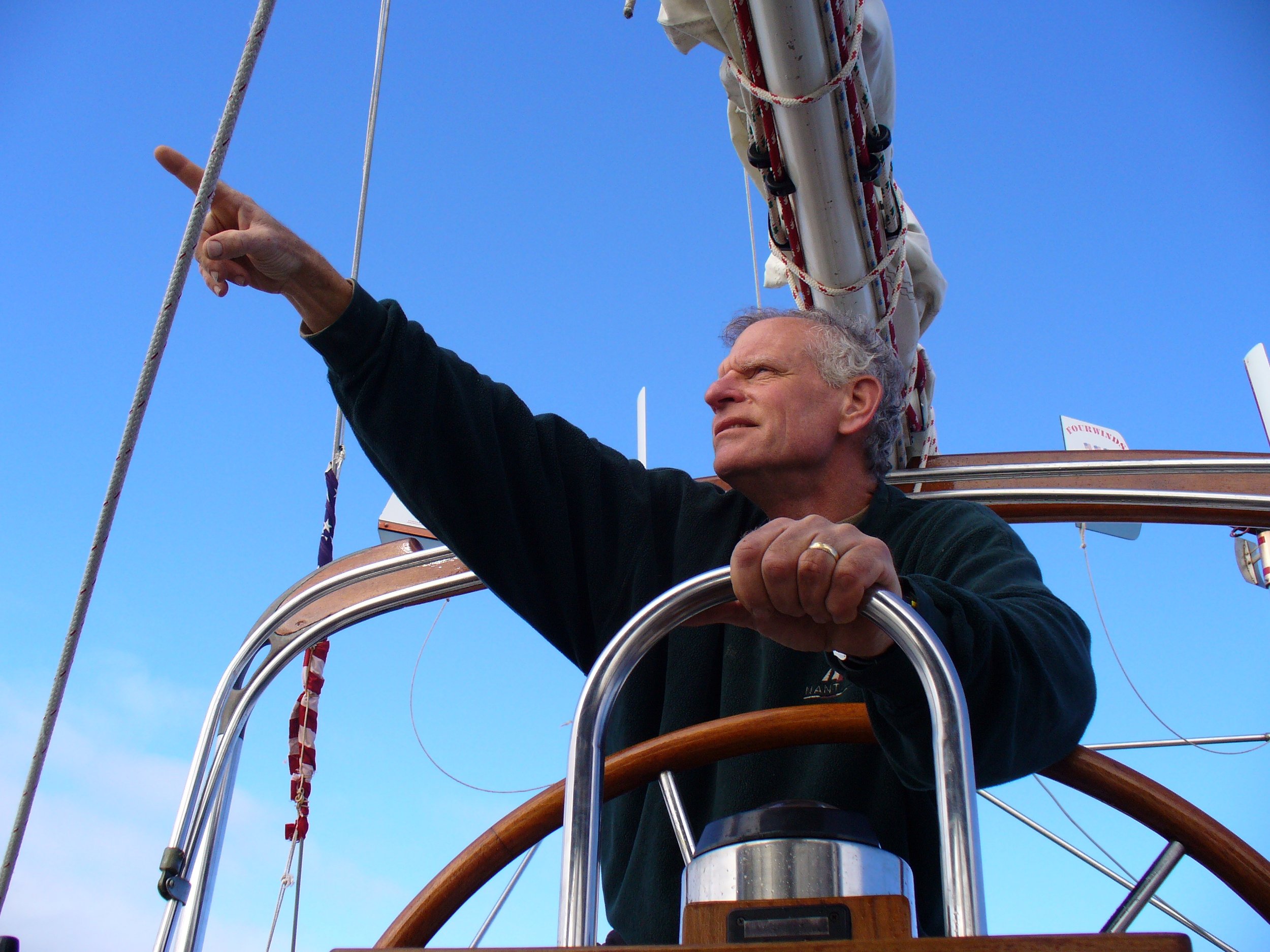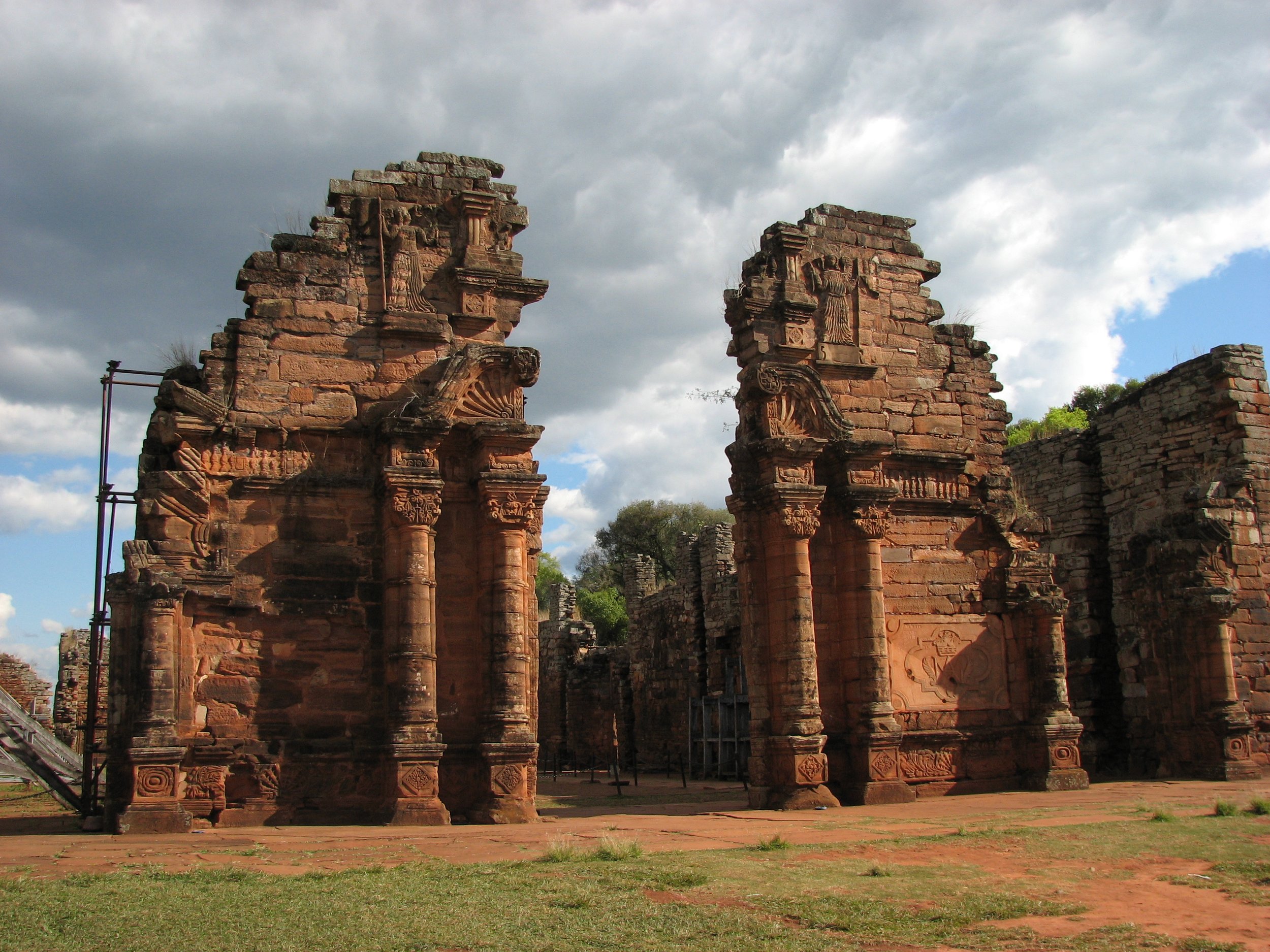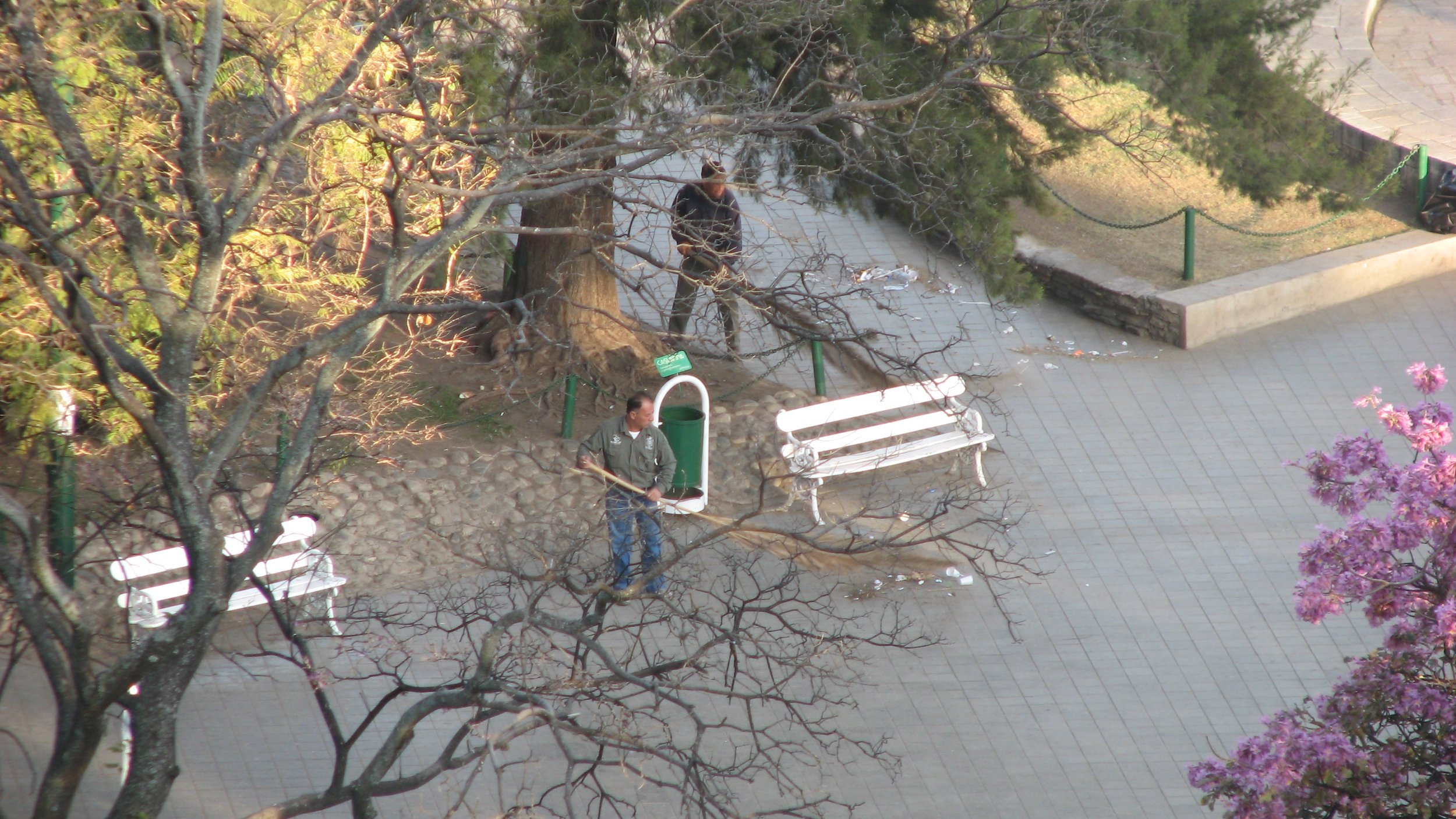Argentina … Tango, Wine and High Peaks
From the bottom of the world in Tierra del Fuego, Argentina stretches north up South America’s east coast to Iguazu Falls and extends west to the peaks of the Andes. Think tango, fine wine, Evita, gauchos, Argentinian beef, old mission sites, yerba mate and, of course, Buenos Aires.
Republica Argentina
Capital: Buenos Aires
Land Area: 1,073,519 sq miles; 2nd largest country in SA
Language: Spanish
Currency: Argentinian Peso – 100 centavos = 1 peso
High Point: Cerro Aconcagua, 22,831’ (6,962 m) also the highest point in South America
Low Point: Laguna del Carbón 344’ below sea level (-105 m)
Argentina's name comes from the Latin word for silver, argentum, so named by the first Spanish settlers who came in search of silver and gold during the 1500s.
Government: Argentina's Constitution, which was adopted in 1853, established the country as a republic. The Constitution provides for an elected president and Congress. It places the Roman Catholic Church under government protection.
Argentina is divided into 22 provinces, 1 island territory (Tierra del Fuego), and 1 federal district for purposes of government (like our Washington, DC).
Argentinians are known by other South American countries as somewhat arrogant and boastful. Here are some classic jokes that make light of this pride and bravado.
How does an Argentine commit suicide? He jumps off his ego!
How do you recognize an Argentine spy? From the sign on his back that says “I am the greatest spy in the world.”
We traveled Argentina extensively - both by boat and by bus. Scroll down to see it all, or click on any of the buttons below to “hop-on/hop-off” wherever you’d like…
We arrived in Ushuaia, Argentina at the end of February 2006, a 25-mile motor sail up the Beagle Channel from from Puerto Williams. Ushuaia, touted as the ‘most southern city on the planet”, is a beautiful little city surrounded by mountains. We arrived in summer and enjoyed cool, but mainly sunny weather and long days. After a month in the canals and Puerto Williams, it was a pleasure to shop at a grocery store, buy an ice cream cone, eat at a restaurant, visit a museum and generally enjoy the advantages of civilization again.
Faro del Eclaireurs is probably the most photographed lighthouse in South America.
Faro del Eclaireurs (the French name "Les Éclaireurs" means "the Enlighteners" or "the Scouts") stands in the Beagle Channel about 5 miles from Ushuaia on the northeastern- most islet of the five Les Eclaireurs islets, from which it takes its name. The brick-built tower is 74 ft (22.5m) above sea level with flashing white every ten seconds. The lighthouse, still in operation, is remote-controlled, automated, uninhabited, and not open to the public and guards the sea entrance to Ushuaia. Electricity is supplied by solar-panels. It was put into service in 1920 and today is probably the most photographed lighthouse in South America. We had the opportunity to photograph it on a picture-perfect day.
Ushuaia, the Southernmost City on the Planet
The Selk'nam and Yaghan aka Yamana people inhabited Tierra del Fuego about 10,000 years ago. The city’s name, Ushuaia, is derived from the Yaghan language: ush and waia ("bay" or "cove") and means "deep bay" or "bay to background". The southernmost city on the planet has a population of ~ 45,000 people (est. 2006). It was originally established in 1896 as a penal colony for hardened criminals and political prisoners. The prison was closed in 1947 and replaced by a navy base in 1950 which is still present. Tourism is a major industry for the city which is popular with hikers, and mountaineers, and, because of its proximity to Antarctica (680 miles/1100 km), it’s considered a ‘gateway city to Antarctica’.
Approaching the city from the Beagle Channel it initially looked cold and bleak, but it cleared up quickly and we found Ushuaia to be vibrant and anything but bleak. The municipal pier was in disrepair, so we anchored in the harbor on arrival. The view of the city from the deck of Cups was magnificent. The steep mountains frame the city beautifully rendering a natural work of art. From the top of the hill above the city, we captured a good view of Nine of Cups. She's center and just to the right of the red steeple in the bottom right photo.
We spent several days just exploring the city. One of our first excursions ashore was to the Tourism Office to get our passports stamped in the southernmost city in the world. Immigration officials were liberal with the unique passport stamps. Then we found the museum. The famous prison of Ushuaia which closed in 1947 is now a maritime museum. We spent an afternoon learning about Argentina’s maritime history, Antarctic exploration and quite a bit about the actual prison.
Ushuaia proved to be an easy city to maneuver on foot. The downtown area was only about a 15-minute walk away from the dinghy dock. There were two supermarkets (Norte and Anónima) within the same distance and both were well stocked. Because it caters to tourists, it’s quite lively day and night with lots of shops, restaurants, pubs, boutiques and hotels. Because of its location on the shores of the Beagle Channel and backdrop of the Martial Mountains, the city spread and sprawled up the hillsides as it grew. All walks into town after the shore road require going up, up, up. Many streets have stairways and/or steps to facilitate the climb.
City view from Gobernador Paz street high above the harbor.
Our plans to stay just a short time changed significantly when we met up with our cruising friends on Asylum who had just returned from an Antarctica cruise. The “bug” got us. We did not feel comfortable taking Nine of Cups there… most boats that sail there are steel boats able to cope with icebergs and have larger crews. The alternative was to take the route that Asylum took on The Little Red Boat. We found someone to look at Nine of Cups and Jelly and we booked passage on one of the last cruises of the season. At $2,750 USD per person for the last-minute rate, it was a bargain price and a once-in-a-lifetime opportunity, but a big dent in our very tight budget. We rarely regret what we do, only what we do NOT do. In retrospect, we'd definitely do it again. It was other-worldly. Check out our Antarctica adventure here.
Winter approached quickly and soon the mountaintops were covered in snow.
Once we returned from Antarctica, winter approached quickly. We woke one morning to find snow on the mountains and frost on our noses. It was
time to head north. We made last-minute preparations and provisioned and off we sailed (ugh...motor-sailed). Actually, we could not have asked for better weather other than a bit of wind maybe. But no matter, we motored along the Beagle in relatively warm temperatures, on a mirror-finish channel amidst spectacular scenery.
Along the Beagle Channel and Up the Argentine Coast
We motor-sailed along the calm waters of the Beagle Channel.
We were sailing in "loose company" with Noel Marshal, a single handler, aboard "Sadko". The day was lovely as we headed east out the Beagle Channel to our first anchorage in Bahia Relegada only ~40 miles away. Bahia Relegada is a gorgeous little bay, a well-protected anchorage with access to Estancia Harberton, a place we’d heard much about and wanted to visit. We anchored overnight and the next morning found our way to the Estancia. The scenery was beautiful. Fall colors, reminiscent of a New England autumn, provided a vibrant backdrop for this beautiful ranch.
A short, very pleasant walk brought us to Estancia Harberton, the first estancia (ranch) in Tierra del Fuego and a lovely place to explore. The estancia was established by the missionary Rev. Thomas Bridges in 1886. He is well known for his work with the indigenous Yamana people and for developing an English-Yamana dictionary. His son, Lucas, wrote The Uttermost Part of the Earth, an amazing boyhood memoir of growing up with the Yamana. The estancia is still run by the family, Tommy and Natalie Goodall. Natalie is responsible for the development of the museum there and for identifying and documenting much of the flora and fauna of the area.
My favorite photo of the day… we spotted several grey foxes indigenous to the area, roaming around freely on the estancia grounds.
We spent several hours at Harberton, then at the end of the day, trekked back over the hill to the anchorage. I had made a “cottage pie” (a shepherd’s pie with hamburger, not lamb) and since Noel had heat on Sadko, we decided to bring it to his boat for dinner and be warm at the same time. The night was cold, but calm with a starry sky and brilliant moon. We hauled anchor early the next morning for another 40 miles down the Beagle to Bahia Sloggett, a non-descript, uncomfortably rolly anchorage.
Yet another 60 miles and we were anchored at Puerto Aguirre, the end of the Beagle Channel. The weather had deteriorated rapidly the day before and the forecast was for more of the same… strong northerly winds, big waves in the Atlantic and SNOW! There was nothing much ashore at Puerto Aguirre except a small house and a couple of outbuildings. During the night, as winds and waves increased, Sadko, anchored next to us, dragged its anchor and we all stood anchor watch during the night until it was light enough and calm enough to re-anchor.
After clearing the foredeck of snow, the captain came after his first (and only) mate with snowballs!
We ended up waiting three days for a weather window to move on midst snow, hail, strong winds and a rolly anchorage. The next leg of the trip would bring us out into the Atlantic through a particularly treacherous piece of water, the Lemaire Strait. We headed out to ride the north setting tide and with the help of Neptune, timed it perfectly. Though waves in excess of 50 feet had been noted in this area, we motored through in nearly calm waters and light winds. Blessed…once again. We could not have asked for better weather or timed the passage any better.
The entire trip north along the Argentine coast from Ushuaia to Mar del Plata took 19 days. We had a mix of blizzards, gales, big seas and perfect sailing weather, but at last we headed into Mar del Plata and some warmth.
Mar del Plata
Mar del Plata or Mardel, as the locals call it, is very different from Ushuaia. Founded in 1874, it is THE most popular Argentine beach destination. It is a resort town for Buenos Aires summer folk and this is reflected in the services and amenities it offers. There are skyscrapers, luxury hotels, lots of restaurants, tours and an abundance of upscale boutiques and shops.
An enormous Jesus statue erected on the breakwater welcomed us to Mar del Plata’s harbor where we tied up at the Yacht Club Argentino. Though there were plenty of boat chores to handle, the city beckoned. We visited the Juan Carlos Castagnino Municipal Art Museum and Museo del Mar which was dedicated to seashells, 30,000+ shells collected over 60 years and 26 trips around the world. Smelly as they are, we enjoyed watching the sea lions “walk around” on their flippers and interact with each other. They grunted and brayed, swam and lazed in the sun and every once in a while would take a dip to catch a snack or just cool off.
Skyscrapers and Steeples… From the roof of the museum, there were excellent views of the city, an odd mixture of old and new. an ornate church steeple midst one story homes and high-rises.
After 10 days at the yacht club in Mar del Plata, we crossed the Rio de la Plata for Uruguay with every intention of returning to Argentina with the boat after a quick haul-out. The trip from Mar del Plata to Piriapolis, Uruguay was only 224 miles. A pleasant 2-day, overnight passage of 44 hours and we were in a new country right across the Rio de la Plata. Plans change with the tide. The boat remained in Uruguay for five months, and instead, we made two trips back to Argentina to do more exploring: once for 4 days to Buenos Aires with our son, Brennan and his fiance, Hannah in August 2006 and the second trip for the month of September 2006 to see the northern and central regions of the country. Want to explore Uruguay with us? Just click here. Or continue exploring Argentina.
Buenos Aires
Buenos Aires, Argentina’s capital city is exciting and vibrant and comes alive when most cruisers like us have long been asleep. The city was founded as a permanent settlement in 1580 and named by Buenos Aires (Good Air) by Pedro de Mendoza . With a metro population 3+ million (est. 2006), the Porteños (por-tayn-yos...people of the port), as the inhabitants of Buenos Aires are called, are friendly, cosmopolitan and very proud of their city.
Divided into several "barrios" (neighborhoods), we stayed in the Congreso area of the city for each visit. It was central and easy to catch subways or walk to other parts of the city.
August 2006 - A Walking Tour
With the help of Lonely Planet Buenos Aires, Hannah planned out a great walking tour for us Come on along… wear comfy shoes.
Congreso de la Nación Argentina - the Congress building where the Argentinian Congress meets. We walked the area on a bright, beautiful day.
Cementerio de la Recoleta
Argentines believe in splendor during life and after death. The city’s famous cemetery, Recoleta, is one of BA’s hottest tourist attractions. Located in the middle of town, the cemetery is grand and resplendent. Described in a tourism brochure as an ‘eerily beautiful place, with shadowed walkways and towering marble mausoleums rich in Art Deco, Art Nouveau, baroque and neo-gothic architectural styles’, It’s most famous resident: Evita!
Hannah arranged a tour of Teatro Colon which was wonderful. Teatro Colon opera house was built in France and then shipped in parts to Buenos Aires where it was reassembled in 1908. Photos were limited, but we were allowed to capture some of the grandeur of this world-class facility for opera, ballet and classical music. When we visited a month later, we had the opportunity to see “Swan Lake” performed here from elegant box seats. The exterior of the opera house was under renovation when we visited, but I nicked a photo from the internet to show its opulence and majesty.
Inland Travel in Argentina - A Rather Circuitous Journey
We left Cups "on the hard" in Piriapolis, Uruguay on 30 August 2006 and, with full backpacks and a rough itinerary of what we wanted to see, set out by bus for a tour of northern and central Argentina with a planned side trip to Paraguay. We traveled via public transportation…bus, subway, train and ferry. With Lonely Planet Argentina as our guide, we took a bus from Piriapolis to Montevideo where we waited for our Paraguayan visas to be processed, then we caught a bus for Paysandú, Uruguay at the Argentine border. We overnighted in Paysandú and left early for a bus to Colon, Argentina where we caught yet another bus to Concordia in order to catch an overnight bus to Puerto Iguazu. That’s what bus travel in South America is all about and as always, it’s an adventure.
We planned to visit Iguazu first, return to Posadas then travel to Paraguay from there. Our itinerary changed as we decided to include some places we hadn't considered earlier or stayed longer than anticipated in other places. The luxury of making changes on a whim was not lost on us. We relished the thought of taking our time, seeing what we wanted to see and not missing out on anything which caught our fancy.
Iguazu Falls
Iguazu Falls, one of the world's largest waterfalls, consists of more than 275 cascades along a two-mile stretch of the Iguazu River. Located on the Brazil/Argentina border, there are two large national parks...one on either side of the Falls. Discovered in 1541, this area was established in 1984 as a Natural World Heritage Site by UNESCO. We stayed in the little town of Puerto Iguazu for a few days... an easy commute by local bus back and
forth to the Falls. Panoramic views were stupendous as viewed from an elaborate set of "pasarelas" (catwalks) and footbridges throughout the park.
Gargantua Diablo at Iguazu Falls
Lower Trail Falls at Iguazu
San Ignacio de Mini
The ruins at San Ignacio de Mini date from the 16th century. Founded by San Ignatius de Loyola in 1534, this Jesuit mission was dedicated to education and the teaching of Catholicism. When the Jesuits became a bit too influential in the eyes of the Spanish landowners and the Pope, they
were summarily expelled from Argentina. A museum displays the history of the Jesuits in the area and their influence in Argentina.
From San Ignacio, we bussed to Posadas. Lonely Planet listed several interesting things about the town including a great Natural History Museum and the fact that the specialty of the town was frog's legs. Unfortunately, the museum was closed due to lack of funding and frog legs were no longer served, but rather exported to places like France and Canada according to the waiter who served us chicken instead. Oh, well, pollo was fine!
From Posadas, we crossed the border to Paraguay for a few days and then crossed back into Argentina to Resistencia and on to Salta.
Salta - Jewel of the North
The Andean Northwest is considered to be the most "traditional" part of Argentina and Salta is its hub. A city of ~500,000 people (est. 2006), the city maintains a colonial ambiance due to its well-preserved architecture. We tried to see as much as possible. The Cabildo was the colonial city hall and became the home of the Museum of the North, which was absolutely wonderful. There were many churches in town, but the most impressive was the ornate Iglesia de San Francisco. We rode Salta's "teleferico" 926' upwards to the top of Cerro San Bernardo for an unsurpassed view of the city below.
Valle Calcachiques - Parque Nacional Los Cardones
Salta is also a good hub for exploring the Calcachiques Valley and the Parque Nacional Los Cardones. We checked out all the tours in town and found one to our liking. We opted for a 2-day, overnight covering a 320-mile circuit over unpaved roads into the Andean foothills. The tour included a route through a national park, several scenic "quebradas" (gorges), stops in small Andean towns to check out the fine weaving and crafts and finally wine tasting in the vineyards of Cafayate. We shared the tour with a pleasant couple from Madrid. The Argentinian accent is quite different from other Spanish-speaking countries and our tour companions spent a good deal of time correcting our Argentinian guide’s Spanish.
One of the first interesting sights was a huge crowd of "peregrinos" (pilgrims) making their way on a 5-day pilgrimage to Salta for an annual religious festival. We spotted a guanaco, a member of the camelid family related to the llama, alpaca and vicuna and found in the wild of the Andean foothills.
We stopped at numerous little towns along the way including the picturesque little town of Cachi with its whitewashed buildings and cobblestone streets dating back to the late 18th century.
Parque Nacional Los Cardones
The Parque Nacional Los Cardones is a massive expanse of desert and cacti with a backdrop of the Andean foothills. Cardones are cardon grande cactus or Argentine saguaro.
Cafayate
We slept in Cafayate for the evening. At an elevation similar to Denver’s, we could see the Andes in the distance through misty blue skies. Cafayate is wine country and the highlight of the visit here was two winery tours we took the next morning. The vineyards were in beautiful settings and offered wine tastings which were good even at 10am. In addition to fine bottles, we got a kick out of the mountains of “jug” wines waiting to ship. While touring the winery, we noted a man in fine gaucho regalia.
We visited two wineries, Domingo Hermanos & Vasija Secreta. Though they produced both reds and whites, the local specialty is dry white called “torrentés”. A local ice cream shop offered wine-flavored ice creams which I felt obligated to try. It’s an acquired taste and I think I’ll stick with maple walnut.
Catedral de Nuestra Señora del Rosario in Cafayate
The road back to Salta was paved (thank goodness) and took us on a scenic route through Quebrada de Cafayate. The landscape was red sandstone in interesting shapes, lending themselves to local names and legends. The “Amphitheater” was not only interesting-looking but had good acoustics and provided a venue for musicians and artisans.
Quebrada de las Conchas offered great vistas from the top of a small hill which we climbed. It reminded us of the North American Southwest.
We returned to Salta in the late afternoon, hot and dusty. The driver let us off at the bus terminal where we bade a fond “adios” to our tour companions, then bought our tickets for the overnight bus to Cόrdoba, 14 hours away.
Cόrdoba ... City of Bells
Cordoba is the second largest city in Argentina and dates from the 17th century. With seven universities, it is also the educational center of the country and maintains the best-preserved colonial architecture. It was our favorite city on our tour and we enjoyed several days in the city exploring all it had to offer. Our hotel, The Sussex, afforded us a wonderful view of the plaza directly beneath our window. We watched each morning as a maintenance crew swept the plaza using huge palm fronds.
Cόrdoba is called the “city of bells” for good reason. There are some 30 churches in the city. The main cathedral on the Plaza San Martin was constructed by the Jesuits and Franciscans over a period of two centuries beginning in 1577.
We took a walking tour including the Manzana Jesuitica in town as well the underground crypts discovered fairly recently by the local phone company when trying to lay new cables. Manzana Jesuítica was a mystery to us initially. “Manzana” in Spanish is apple… Jesuit apple didn’t sound quite right. Relying on our trusty Spanish dictionary, we finally realized that “manzana” can also mean “block” as in city block. The Manzana Jesuitica is also known as the “Block of Enlightenment” because it was here that the Jesuits set up their educational center and studied. Construction began in 1645 and was not completed until 1671. We were allowed to view several of the rooms, the courtyard and the library which contained books dating back to the 17th century carefully preserved for viewing only. The elaborate nature of the interior was elegant, though overstated for our taste.
South America’s oldest university is Cordoba’s Universidad Nacional de Cordoba founded in 1613 and elevated to university status in 1622. For a reference point, that’s 20 years before Harvard University was founded in the USA and seven years before the Pilgrims even landed at Plymouth Rock.
We took a full day tour of several Jesuit estancias (ranches) in the surrounding countryside. In 2000, UNESCO declared Manzana Jesuitica and five
Jesuit estancias in the area a World Heritage site. The tour was excellent and gave us a feel for the richness of the local culture.
Mendoza
Mendoza is known for its vineyards, wine and olives and in fact, produces 70% of the country’s wine. With a population of ~130,000 (est. 2006), it is a lively city with lots of restaurants, boutiques and wine tastings. Though tours were popular, we hated sitting through the tour for a little taste of mediocre wine. We discovered “flights”, 3 glasses of better wines from a particular bodega for a fixed price. Never mind the tours, we took flights daily during and after our exploratory walks.
Once again, we found creative local ice creameries with wine-flavored offerings Vanilla Malbec, Peach Syrah and pineapple Viognier
We took a bus to the top of Cerro Gloria, the highest point in the city adorned by an enormous military statue and topped by Lady Liberty
Designed by Carlos Thays in 1896, General San Martin Park was absolutely stunning. The gates of the park are cast iron and as the story goes, were ordered by the Red Sultan of Turkey from a foundry in Scotland. The Sultan died before delivery, the governor of Mendoza found out they were available, bought them and had them erected in 1907.
Across the Andes
Mendoza is very close to Santiago, Chile, just a quick 6-hour trip over the Andes. We had toured the Chilean coast extensively EXCEPT for Santiago, Viña del Mar and Valparaiso due to time constraints on getting to Puerto Montt for a timely entrance into the canals. We figured this would be an easy chance to get in a visit. We secured the two front seats in a double-decker luxury bus and off we went. Without a doubt, this is the most hair-raising, exhilarating, incredibly beautiful ride we have ever taken.
The roads on the Argentina side were quite well maintained, but on the Chilean side… not so much. Some of the curves were especially bad and as the bus swung wide to make the corner, part of the bus was not on the road at all. The entire bus held its breath and there was a collective sigh of relief as the bus found solid ground beneath its tires and headed toward the next curve. There were 28 hairpin, cliff-hanging turns in all. The switchbacks are incredibly steep and sharp, there are no guardrails or barriers at all and the edge of the road is badly eroded.
At 22,627 feet, Cerro Aconcaqua hidden in the mist above is not only the highest mountain in South America, it is the highest in the western hemisphere. This was the view from the bus as we drove by.
Buenos Aires Revisited
We made it over the Andes in one piece, enjoyed our visit to Chile and survived the return trip over the same route with much less drama since the
switchbacks were behind us, not in front. We passed through Mendoza once again and headed back to Buenos Aires on an overnight bus where we met up with old cruising friends, Katie and Jim from Asylum.
With Katie and Jim, we visited LaBoca, a blue-collar local’s neighborhood. In the mid-19th century, LaBoca became home to Spanish and Italian immigrants who settled there. Working in the shipyards, there was lots of left over paint with which they also painted their corrugated metal homes. These brightly colored houses later became one of Boca’s claims to fame. It is now a most pleasant area to walk around and enjoy with boutiques, artisans and artists, restaurants and bars.
The tango was the first Latin American dance to gain international popularity. It reputedly started in Buenos Aires in the 1880s but was considered by the upper class as too crass and vulgar for polite society. Young members of the upper class found it exciting, however, and 1913 became known by some as the “Year of the Tango”.
There are tango shows, tango dancers, tango lessons and tango displays wherever you go in Buenos Aires. With Katie and Jim, we decided to take in a tango dinner show. The dinner wasn’t bad, but the tango was for tourists only… lots of them. We found much better displays on the streets of San Telmo and a particularly great performance for just us in a small restaurant in La Boca.
After a month on the road, our time in Argentina came to an end as did our time on the South American Continent as well. We returned to Uruguay via the Buquebus Ferry across the Rio de la Plata. After finishing up boat chores and provisioning, we were ready to begin our Trans-Atlantic voyage to South Africa. Nearly three years in South America… the time has been magnificent and gone all too quickly.
What did we like best about Argentina?
The food…
Ice Cream…absolutely wonderful… Persico had the best, but Freddo was a close second.
Beef… never have we eaten so much beef… never! (and the following year we gave up red meat! Go figure!)
Media lunas (croissants) for breakfast with strong, rich café cortado.
The wine…
Malbecs and Cabernets… the reds were the best.
The geographical and cultural diversity…
Seeing Cerro Aconcaqua, the highest mountain in the Western Hemisphere
Ushuaia… the southern most city on the planet
Puerto Iguazu… tremendous waterfalls
Rio de la Plata… widest river in the world
17th century Jesuit estancias and missions
The visit from Brennan and Hannah
No time to waste. We’re heading to South Africa with a planned stop at the remote little South Atlantic island of Tristan da Cunha. Come on along for the ride. No seasickness… promise!





















